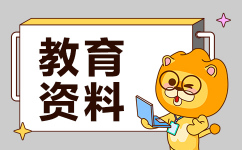英语一直是固定的一门外语,现在很多学校从小学一年级开始就会进行一年级的英语重点知识教学,以下是小编为大家整理的相关内容,欢迎大家阅读借鉴。
一年级英语重点知识点汇总1
1.现在进行时
表示正在发生的事情或进行的动作,常与now,listen,look等词连用,结构是主语+be动词(am,is,are)+动词ing.
如:It is raining now.
外面正在下雨
It is six o’clock now.
现在6点了
My parents are reading newspapers in the sitting room.
我父母正在客厅看报纸
Look!The children are having a running race now.
看!孩子们正在赛跑
问句将be动词移前,否定句在be动词后+not.
2.一般现在时
表示经常反复发生的事情或动作,常与often,usually,sometimes,always,every day(week year…)on Sundays等词连用。
结构是主语+动词原形;当主语为第三人称单数即he,she,it,Tom,my mother,the boy等词时,动词后加s或es.
如:We have an English lesson every day.
我们每天都要上英语课
Do the boys run faster than the girls?Yes,they do.
男孩比女孩跑的快吗?是的
问句借助于do,does否定句借助于don’t,doesn’t,后面动词一定要还原。
3.一般过去时
表示发生在过去的事情或存在的状态,常与just now;a moment ago;…ago;yesterday;last(week;month;year;Monday;weekend);this morning等词连用。
结构是主语+be动词的过去式(was;were)或主语+动词的过去式。
注意:be动词与动词过去式不可同时使用。
如:My earphones were on the ground just now.
我的耳机刚刚还在呢。
Where were you last week?I was at a camp.
你上个星期去哪了?我去野营了
What did you do yesterday?I visited a farm
你昨天去干嘛了?我去参观农场了。
问句有be动词将be动词移前,没有be动词借助于did,后面动词还原;
否定句有be动词在后面加not,没有借助于didn't后面动词还原。
4.一般将来时
表示将要打算发生的事情或动作,常与tomorrow,next week(year;Tuesday…),this week(weekend;evening;afternoon;…)today等词连用。结构是主语+be(am,is,are)going to+动原或主语+will+动原。
如:What are you going to do tomorrow?I am going to have a picnic.
你明天要去干嘛?我要去野餐。
The childre are going to have a sports meeting next week.
孩子们下个星期将参加运动会。
Tom will/is going to see a play with his father this evening.
例:I’d like to visit the History Museum.=I want to visit the History Museum
11.some
用于肯定句中,在否定句和问句中改为any,但当表示委婉语气时仍用
如:Can I have some writing paper?Would you like some orange juice?
12.代词
人称代词主格做主语用一般放在句首或动词前,主格分别是I you he she it we you they。
宾格做宾语用,一般放在动词或介词后
如:Open them for me.Let us…,join me等。
宾格分别是me you him her it us you them。
形容词性物主代词放在名词前,不能单独使用,分别是my your his her its our your their
名词性物主代词相当于形物加名词,它只能单独使用后面不好加名词,分别是mine yours his hers its ours yours theirs。
13.介词
介词后要么不加动词,加动词只能加动词ing形式
如:be good at running;
do well in jumping;
14.时间介词
季节前,月份前用介词in
如:in summer;in March
具体的哪一天如星期几,几月几日用介词on
如:on Saturday;on the second of April;on Wednesday morning
在几点钟前用介词at
如:at a quarter to four;
只在上下午晚上用in
如:in the morning/afternoon/evening;
但在夜间用at night。
另:季节,月份和星期前不好加the.
15.名词复数构成的方法
有规则的有:
(1)直接在名词后加s
如orange—oranges;photo—photos;
(2)以x,s,sh,ch结尾的加es
如:box—boxes;glass—glasses;waitress—waitresses;watch—watches;peach--peaches
(3)以辅音字母加y结尾的改y为i加es
如:study—studies;library—libraries;hobby—hobbies;family—families;
(4)以f,fe结尾的改f,fe为v+es如:knife—knives;thief—thieves(注:以o结尾的我们学过的只有mango加es,mango—mangoes其余加s,)
不规则的有:
man—men;woman—women;people—people;child—children
16.动词第三人称单数的构成
(1)直接在动词后加s
如:run—runs;dance—dances
过去式rained;snowed;
如:①Look!It is raining now.瞧!天正在下雨。
②It often rains in Nantong in summer.南通夏天经常下雨。
③It rained yesterday.昨天下了雨。
④It is going to rain tomorrow.明天要下雨。
(3)形容词为rainy和snowy意思是有雨的和有雪的
如:It is often rainy here in spring.这儿的春天经常是有雨的。
If it is rainy tomorrow,I’ll stay at home.如果明天是有雨的,我将呆在家里。
一年级英语重点知识点汇总2
现在进行时用法
主语在句首,am,is,are跟在后,
现在分词跟着走,其他成分不可丢。
表示动作正进行,句中now时间定。
一般问句,把be提到句前去。
否定句式也简单,be后只把not添。
特殊疑问句用法
What用途广,要问“什么”它当先。(What’s this?)
How开头来“问安”。(How are you?)
Who问“谁”。(Who’s that man?)
“谁的”Whose来承担。(Whose eraser is this?)
询问“某地”用Where。(Where is her cat?)
“哪一个”Which句首站。(Which one?)
动词加-s或-es方法歌诀
动词三单现在式,一般词尾加-s。
s,x,ch,sh在词尾,直接加上-es。
词尾若是字母o,加上-es不用愁。
“辅音字母+y“来结尾,变y为i是正规。
-es后边紧跟随,study→studies看明白。
“be going to”的用法口诀
be going to,表打算,准备、计划将干。
表可能,有必然,通过现象来推断。
使用它,要注意,疑问形式be提前。
否定句,更简单,not放在be后边。
to之后,动原形,be的形式看人称。
下列词,要注意,come go和离去(leave)
进行时,表将来,牢牢记住莫忘记。
祈使句用法
祈使句,祈使句,请求、命令或建议。
主语是you常省去,动词原形开头记。
否定形式要注意,句首要把Don’t加。

